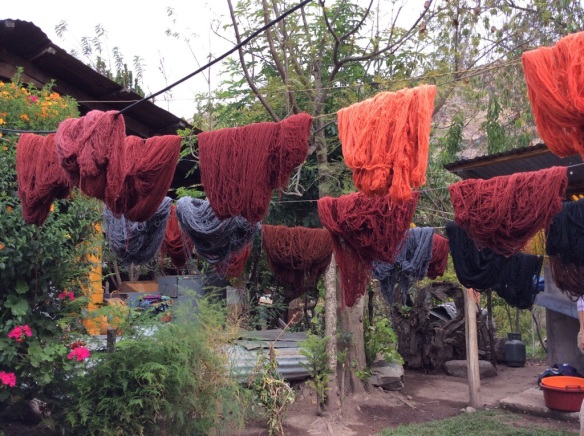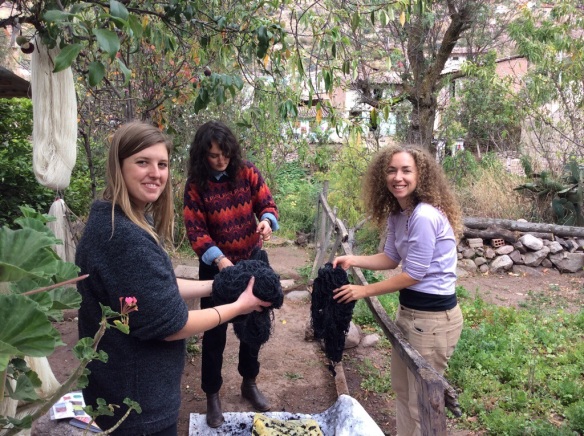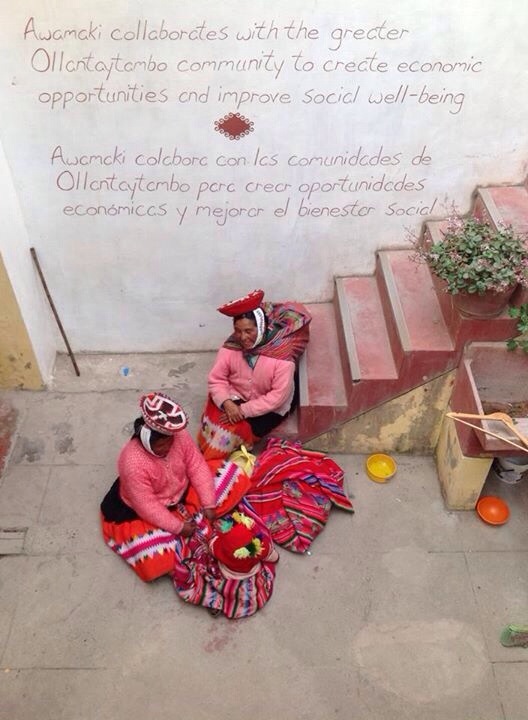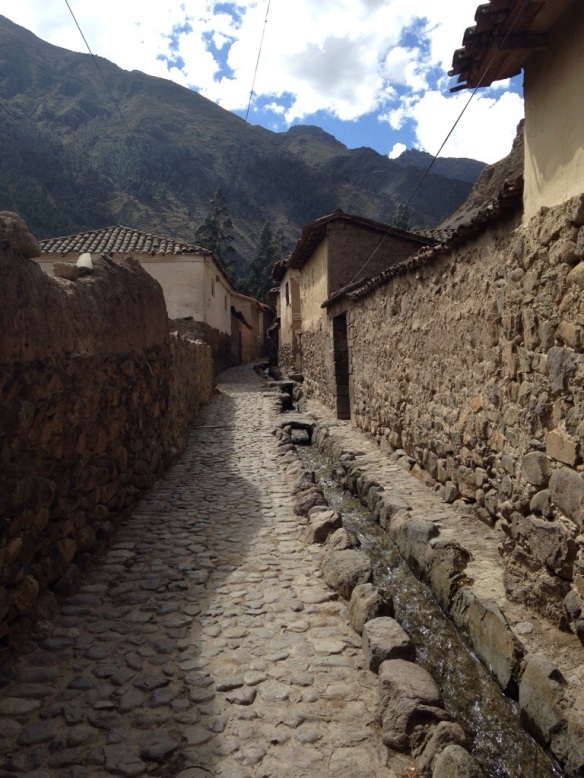
Had a great time up in Patacancha learning how weave on a back-strap loom.
The finished product!
Natural Dye Workshop
Awamaki office this afternoon
La Tienda
A day in the life…
Here’s a breakdown of a typical day at Awamaki and in Ollanta. Family life is centered around meals, which frame the day. Before I came here, I was told that breakfast was usually tea and bread, not the case with my home stay family. My host ‘sister’ Denis is an amazing cook and all of our meals are prepared with much thought. My day revolves around these meals and my attempt to speak Spanish at the table. Breakfast is at 7, lunch is at 1, and dinner is at 7. The food is all natural and very fresh and rice and potatoes are a mainstay in most every meal except breakfast.
A typical day I go into Awamaki’s office at 9am and go to the sewing studio where I have been helping with designs, revising patterns and doing research on other weaving cooperatives in the area. Everyone breaks for lunch, which is the main meal of the day, although you wouldn’t know it as dinner at my house is just as important. I then go back to the studio and work some more or go to meetings. Around 4pm, we usually will go hiking to one of the amazing ruins that are within walking distance of the town. Dinner is at 7, then I usually go home and read, etc. or chat with my roommate Grace.
Today I will be taking a combi, which is a type if van used to get to other towns, and visit fair-trade shops in Cusco to see their product offerings and do some comparison shopping. There is one in particular, The Center for Traditional Textiles Cusco, that I am most excited to visit. The director, Nilda Callanaupa Alvarez, sounds like a remarkable woman and has been helping to keep traditional weaving techniques alive in 9 indigenous communities for nearly 20 years.
Three days per week, I have Spanish lessons with Abi, a Peruvian who works with Awamaki’s language school. Abi is a great teacher and we laugh a lot during these two hour sessions.
As for the products I have just designed, I worked with the head of the woman’s co-op, Ivy, and we came up with the two that will be going into production soon. She had asked me if I wanted to design the textiles, and I said I preferred having the weavers do this themselves as every piece of cloth woven tells a personal story of the woman who made it.
Next week, I will be teaching the seamstresses how to make the yoga bag and infinity scarf with the new textiles that are being woven as we speak about an hour up the mountain. I’ve included a photo of the samples done in burlap and canvas to give an idea of what they will look like. The burlap is where the hand-woven textiles will be.
Manchu Picchu
Still figuring it out!
I’ve been asked to write more about what I’m doing here in Peru, so here’s a quick explanation. I’m here on sabbatical from teaching to help Awamaki, which in Quechuan means hand-woven, with new designs for their woman’s co-operative. So far I have designed two new products, a yoga mat bag (big surprise!) and an infinity scarf with a hidden pocket for money and passports. I have incorporated their beautiful hand-woven textiles into these designs which can be purchased at Awamaki’s fair-trade store here in Ollanta and also online. I will also be going to the village of Patacancha to learn traditional back-strap weaving and stay with a local family for three days to learn about their community. Here’s a photo of Awamaki’s office.














